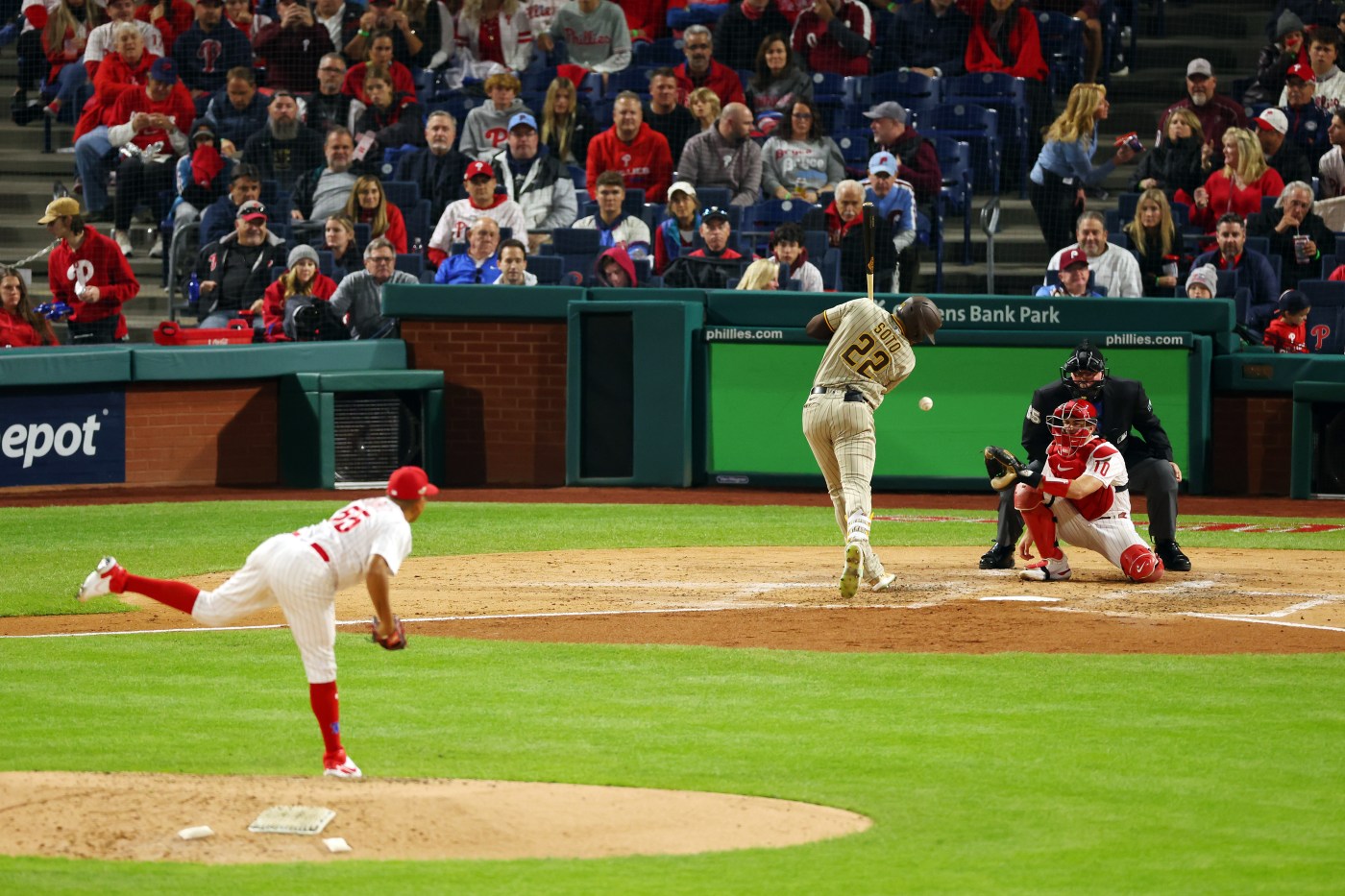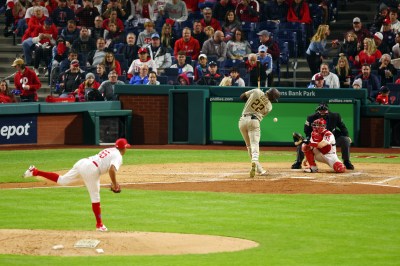Baseball has historically occupied a significant place in our nation’s psyche, from the story that the game’s inventor, Abner Doubleday (who likely didn’t really invent it), also fired the first shot for the Union in defense of Fort Sumter (he likely did do that), to “The outlook wasn’t brilliant for the Mudville nine that day,” to John Updike’s description of Fenway Park as a “lyric little bandbox,” to the moment at the end of Field of Dreams that causes any father with a beating heart to choke up: “Hey, Dad. You wanna have a catch?”
Which is why it matters that Major League Baseball (MLB) is in crisis. This year, 23 of its 30 teams are down in attendance from last season. Overall attendance in 2022 has declined by 6.4 percent when compared to 2019, the last year in which COVID-19 was not a significant factor, making this the fifth consecutive non-pandemic-affected season in which MLB attendance has declined.
If demography is destiny, then baseball’s isn’t promising. Fully half of those watching baseball games on television are 55 or older, up from 41 percent a decade ago. At the other end of the age scale (i.e., the place that future fans are going to come from), there were 9 million youngsters between the ages of 7 and 17 playing organized baseball in 2002. In 2013 that number was 5.3 million.
According to Gallup, baseball has fallen from the preeminent position that it had among America’s spectator sports through the mid-1960s, to where it now trails football, basketball, and, if trend lines since 2017 have held, soccer as well.
Why?
For one thing, the average length of this season’s MLB games is three hours and seven minutes. Three-hour-plus games have been the norm since 2016. In 2003, the average MLB game lasted two hours and 46 minutes.
Far more damning is the fact that during those longer games there is less action. In 2021, a ball was put into play—either via a ball batted into playable territory or a stolen base attempt—every four minutes and two seconds. In 1985 it was two minutes and 50 seconds.
Why is there less action? One, pitchers dawdling on the mound. Two, batters dawdling outside of the batter’s box. And three, more strikeouts and strikeouts’ first cousins, walks.
To its credit, MLB has taken steps to address its crisis. Beginning next season, pitch clocks will be implemented. If the time expires, a ball will be called if the pitcher is the offending party, a strike if it’s the batter. (Such clocks were used in minor league baseball this season, shortening the average game by 26 minutes.)
In an attempt to increase the number of stolen base attempts, the bases will be increased in size by three inches to be 18-inch-squares, and the distance between bases will be decreased by four and a half inches. It doesn’t sound like much, but as we’ve always been told, baseball is a game of inches.
“Free” pickoff attempts will be limited to two. After that, if a pitcher tries to pick off a runner and is unsuccessful, a balk will be called, and all runners will be given an extra base. Net: base runners will take a bigger lead after the two free attempts, which means more stolen base attempts, which means more action.
In the most controversial change, infielders’ feet may not be on the outfield grass, and there must be two infielders on each side of second base when a pitch is delivered. This is to combat the proliferation of shifts where, for example, the shortstop moves to the first base side of second base and the second baseman plays what amounts to a short right field. Since 2018, the frequency of shifts has roughly doubled, to 34 and a half percent, and the batting average on hard-hit ground balls (i.e., those hit 86+ mph) has dropped from .341 to .308. Lower batting averages mean fewer base runners, which means less action. Hitters haven’t stood passively by. Since it’s become more difficult to hit the ball through the infield, they now focus on hitting the ball over it and, ideally, over the fence. Which means more strikeouts. Which means less action.
These changes are well-intended. But the trouble is that they only treat the symptoms. The root cause, simply stated, is that the balance between pitching and hitting has shifted too far in the pitcher’s favor. There’s a simple change that would redress this imbalance while at the same time obviating the need for many of the changes MLB has made, most especially the infielders-tootsies-on-the-dirt requirement:
Move back the pitcher’s mound.
I can hear the howls already. “Jacobin! The pitcher’s rubber has always been 60 feet and six inches from home plate. You want to upset the beautiful geometry of the game!” Well, yes. But the bases were always 90 feet apart.* With the larger bags, two of the basepaths will now be 89 feet seven and a half inches long. How’s that for uglifying the geometry?
It used to be that the only restrictions on where players could be positioned were that the pitcher had to be on the rubber, the catcher in the catcher’s box, and the other seven players in fair territory. How do restrictions on infielders’ positioning square with tradition?
Back to root cause. A 95-mph pitch reaches home plate in about 430 milliseconds. In that time, the batter must process an enormous amount of information. What is the release point: overhand/three-quarters/sidearm? Is it a fastball or an off-speed pitch? Is the spin that of a two-seam fastball, a four-seam fastball, a split-finger fastball, a slider, or a curveball? Where is that pitch going to enter the hitting zone? And is it even going to be in the hitting zone? Or should I take the pitch?
Bear in mind that it takes a batter about 150 milliseconds to get his bat through that hitting zone. So we’re now talking 280 milliseconds of processing time. And today’s pitcher is, on average, a few inches taller than in years past, which means his release point is closer to home plate, which means more precious milliseconds are shaved off.
For every inch the mound were to be moved back, the processing time for the batter would increase by about 0.17 percent. Move the mound back by 18 inches—62 feet from home plate rather than the sainted 60 feet 6 inches—and that would give hitters three percent more processing time. In a context like this, three percent is a big number. More processing time would yield more solid contact, which means fewer strikeouts, which means more action.
And we’re not in uncharted waters. In 1968, Boston’s Carl Yastrzemski was the only American League batter to reach the .300 mark; he hit .301. On the pitching side of the ledger, the Cardinals’ Bob Gibson set a modern era record with an Earned Run Average (ERA) of 1.12. MLB recognized that the pitcher/batter balance had become skewed in the pitcher’s favor, so beginning in 1969, the height of the pitcher’s mound was lowered from 15” to 10”, where it remains today; the size of the strike zone was also reduced to today’s dimensions. The changes worked immediately, with scoring in 1969 increasing by about 1.2 runs per-game per-team, and the MLB-wide ERA increasing by nearly a run.
Some have suggested that a further lowering of the mound might be in order. But there’s only so far you can lower things unless you want to have pitchers delivering the ball up out of the pitcher’s trench rather than down from the pitcher’s mound.
There is, however, plenty of room to move the mound back. How far? That’s for people with the relevant technical training, like neurophysiologists, and those with skin in the game, like pitchers and hitters, to sort out. Will pitchers have to make adjustments? Yup. But Gibson and McLain and Marichal and other elites of their era did just fine, relatively speaking, when the mound was lowered, as will the deGroms and McLanahans and Verlanders and Alcantaras of today were it to be scooched back a bit.
And fair’s fair. Hitters have been adjusting to taller pitchers, throwing harder, with ever faster spin rates, all of which has forced those hitters’ brains to bump up against the limits at which it’s possible to process all that information.
MLB should keep the changes it’s made for now. But with the simple—not easy, but simple— change suggested here, it would soon become clear that many of those changes could be done away with.
Want to get to the root cause? Move back the mound. Fans won’t notice the difference, and the greatest game ever invented may have a fighting chance to pry its way back into a more favorable position in the nation’s consciousness.
*Corrections, October 23: The article originally made a reference to bases being 90 inches apart. It should have said 90 feet. Also, because of an editing error, batting averages were rendered as two digits, not three.






Please note that we at The Dispatch hold ourselves, our work, and our commenters to a higher standard than other places on the internet. We welcome comments that foster genuine debate or discussion—including comments critical of us or our work—but responses that include ad hominem attacks on fellow Dispatch members or are intended to stoke fear and anger may be moderated.
With your membership, you only have the ability to comment on The Morning Dispatch articles. Consider upgrading to join the conversation everywhere.